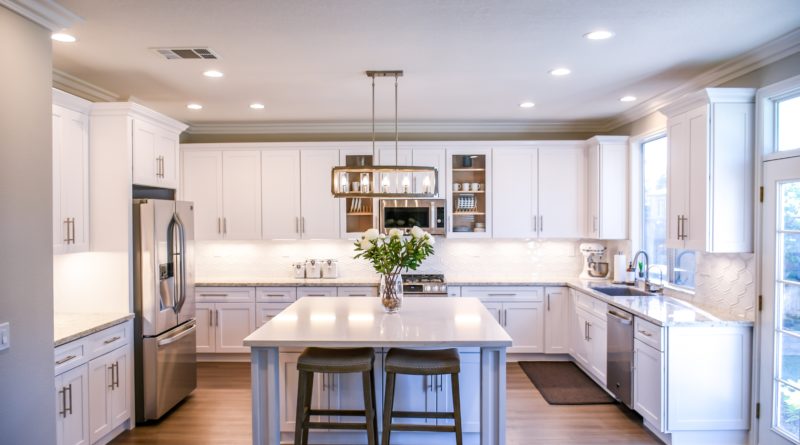Home Flooring 101: Complete Guide on How to Floor Your Kitchens
Your kitchen floor goes through a lot! It has to handle everything and still look good, from spills to drips to foot traffic to dropped utensils. On the other hand, apart from the practicality and durability, your kitchen’s floor makes a major design statement, so you should be extra careful about what you choose.
If you want to make the right choice, you’ll have to balance the style, function, and comfort. Because not all kitchen floorings are suitable for all kinds of locations, some are a little high-maintenance, and some aren’t durable. To end up with the right kitchen floor, you have to consider its style, durability, design, and most importantly, the material.
Choosing the right material for your kitchen’s floor can be a little tricky, especially if it’s your first time. To help you with the process, today we are going to explain different types of floorings that you can consider for your kitchen.
1-Hardwood
Before hiring an expert for kitchen renovation in NYC, it’s essential to know what you want. If you are looking forward to having strong and durable flooring, hardwood will be the best option. For years, people have disregarded the use of hardwood floors for bathrooms and kitchens, but now things have changed, and with the polyurethane finishes and modern sealers, you can now opt for hardwood floors. Yes, this material is more susceptible to damage due to moisture and stains due to spills, but if you like the old, aged look of a hardwood floor, you should go for it.
2-Bamboo
Bamboo is somewhat similar to hardwood, but it’s harder and more potent than hardwood, and its manufacturing process makes it more resistant to water and moisture damage. The only issue is that it’s challenging to refinish bamboo due to the lack of natural grain directions. However, refinishing isn’t impossible, and you can still get it done with a professional’s help. Besides this, bamboo is a little more expensive than hardwood because it’s more robust and more durable.
3-Ceramic Tiles
One of the most common choices for kitchen floors is ceramic tiles. This material, including porcelain, will work wonders for you as with these tiles, you don’t have to worry about any stains or spills or any other damage in the long run and can be just as durable as your quartzite countertops. The best part is that these tiles are also available in many different colors, faux natural patterns, and styles so that you won’t run short of options here. The only drawback here is that these tiles can be a little cold underfoot, but if you have a radiant heating system in the house, there’s nothing to worry about.
4-Concrete
For a ground-level kitchen, we would recommend concrete because first, it’s inexpensive, and secondly, it’s long-lasting and durable. You can make this material attractive and stylish as it can be stained, polished, and treated in a variety of different ways. Just like ceramic tiles, the only issue with concrete is that it can be a little too cold for you, especially during the winter season. Overall, it’s a great choice if you want something that works for you for a long time.
5-Natural Stone Tile
Are you looking for a natural, rock-type, long-lasting flooring solution for your kitchen? The natural stone tile will be best suitable for you here. There are several different options you have here, including limestone, granite, marble, and travertine. It’s the best material if you want an attractive and luxurious looking kitchen floor. The drawback, however, is that natural stone tile is porous, so it’s susceptible to liquid stain and water penetration. Different types of stones come with different properties, so if you choose something strong, sturdy, and less porous, things will work out for you.
These are different types of kitchen flooring solutions you need to consider. Just be careful about the quality of the material and its style so that you don’t end up wasting your hard-earned money.



